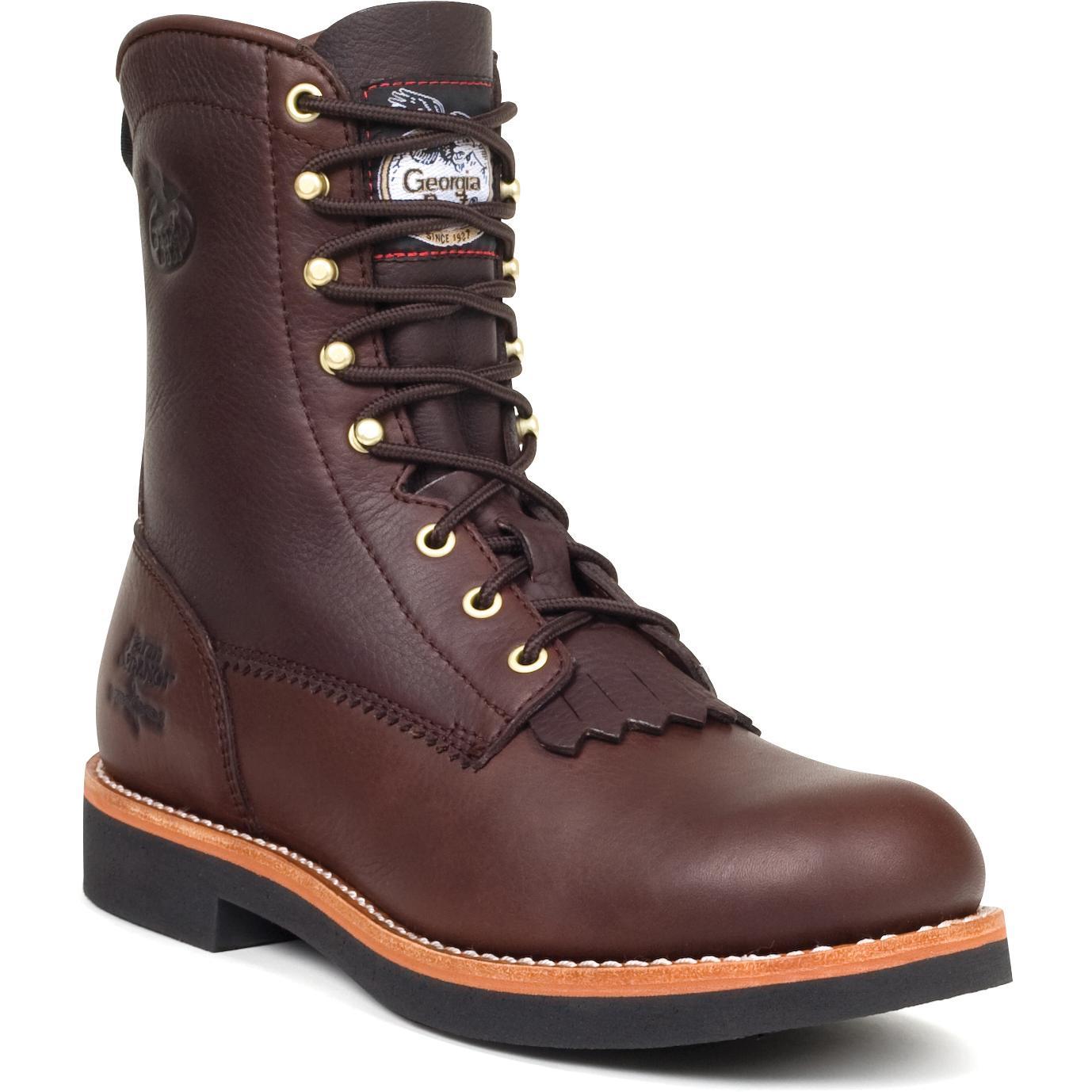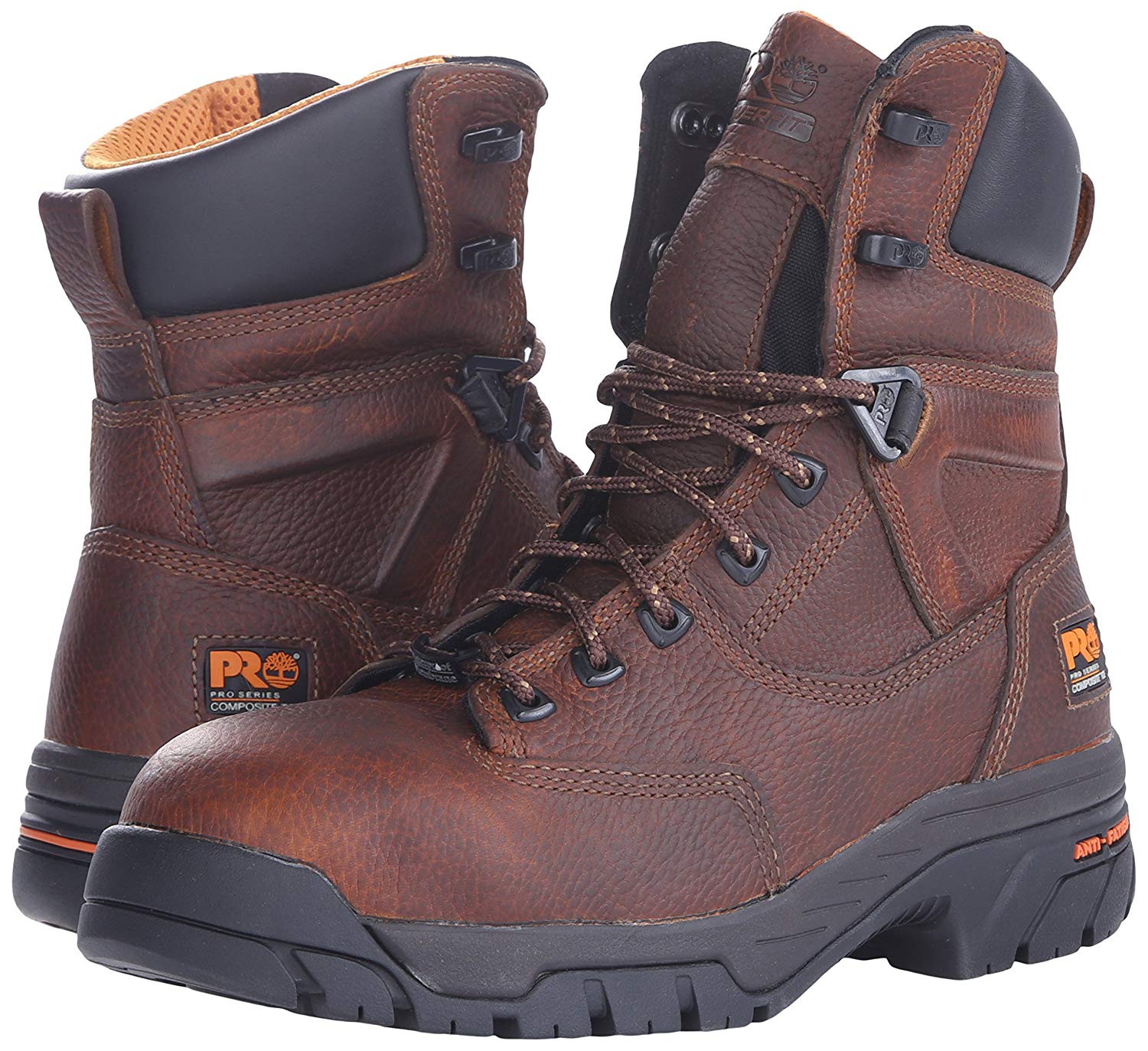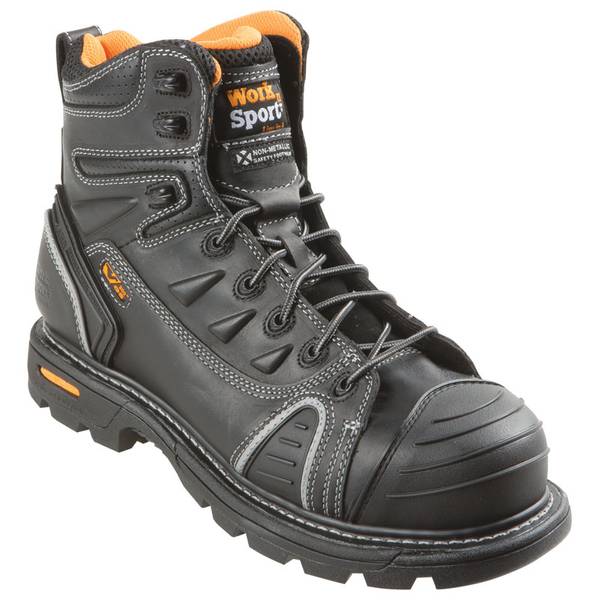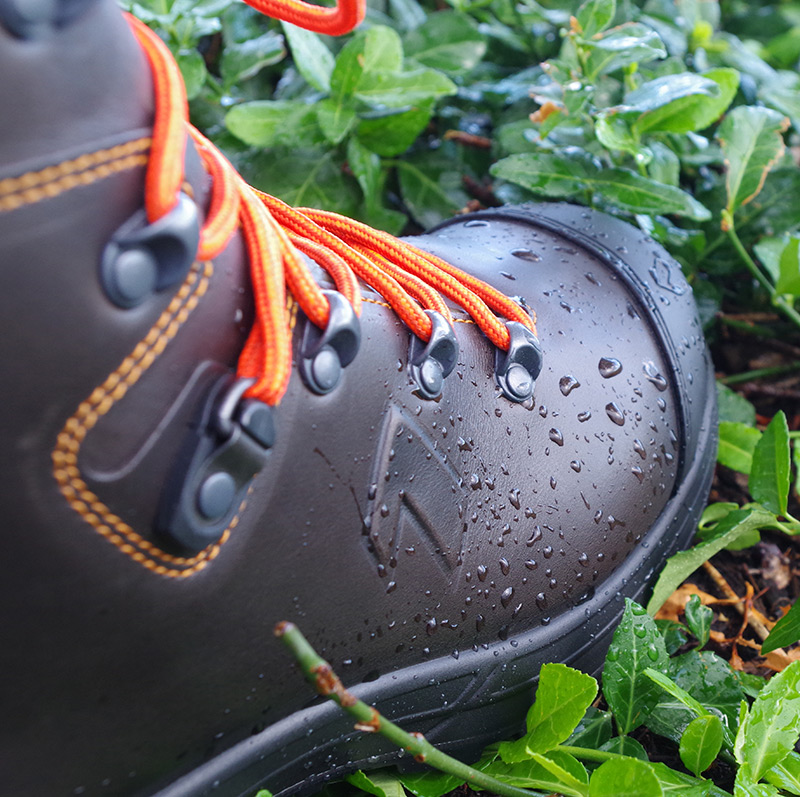What Makes Composite Toe Boots Different?
When it comes to safety footwear, composite toe boots offer a unique set of benefits that set them apart from other types of boots, including steel toe boots. So, what is a composite toe boot? In essence, it’s a type of safety boot that uses advanced materials, such as carbon fiber, Kevlar, or fiberglass, to provide protection and comfort. These materials are often lighter in weight and more flexible than traditional steel, making them ideal for workers who need to move freely and comfortably on the job.
One of the primary advantages of composite toe boots is their ability to provide excellent protection without the added weight and stiffness of steel toe boots. This makes them an excellent choice for workers who need to wear safety boots for extended periods. Additionally, composite toe boots are often more breathable and moisture-wicking than steel toe boots, which can help keep feet cool and dry in hot or humid work environments.
Another key benefit of composite toe boots is their resistance to corrosion and extreme temperatures. Unlike steel toe boots, which can rust or become brittle in extreme temperatures, composite toe boots can withstand harsh conditions without compromising their protective capabilities. This makes them an excellent choice for workers in industries such as construction, manufacturing, or oil and gas.
How to Choose the Best Composite Toe Boots for Your Job
When it comes to selecting the right composite toe boots for your job, there are several factors to consider. The type of work you do, the hazards you face, and your personal preferences all play a role in determining the best boots for you. Here are some key considerations to keep in mind when choosing composite toe boots:
Hazard levels: Different jobs come with different levels of risk. If you work in a high-hazard environment, such as construction or manufacturing, you’ll need boots that can provide maximum protection. Look for boots with a higher ASTM rating, which indicates a higher level of protection against impact and compression.
Terrain: The terrain you work on can also impact your boot choice. If you work on uneven or slippery surfaces, look for boots with good traction and slip resistance. If you work in wet or muddy conditions, consider boots with waterproofing or moisture-wicking properties.
Personal preferences: Comfort and fit are crucial when it comes to composite toe boots. Look for boots with cushioning, breathable materials, and adjustable features to ensure a comfortable fit. You should also consider the weight and flexibility of the boots, as well as any special features you may need, such as insulation or electrical hazard protection.
Industry-specific requirements: Certain industries, such as oil and gas or mining, have specific regulations and requirements for safety footwear. Make sure to research the specific requirements for your industry and choose boots that meet those standards.
Brand and quality: Finally, consider the brand and quality of the boots. Look for reputable manufacturers that specialize in composite toe boots, and read reviews from other customers to get a sense of the boots’ performance and durability.
The Anatomy of a Composite Toe Boot: Understanding the Key Components
When it comes to composite toe boots, understanding the key components is crucial to appreciating their protective capabilities and comfort features. A composite toe boot is made up of several critical components that work together to provide protection and comfort for the wearer.
The Toe Cap: The toe cap is the most critical component of a composite toe boot, as it provides the primary protection against impact and compression. Made from advanced materials such as carbon fiber, Kevlar, or fiberglass, the toe cap is designed to absorb and distribute impact forces, reducing the risk of injury to the toes.
The Midsole: The midsole is the layer of material between the toe cap and the outsole. It provides additional cushioning and support, helping to reduce fatigue and discomfort. In composite toe boots, the midsole is often made from a lightweight, breathable material that allows for airflow and moisture wicking.
The Outsole: The outsole is the outermost layer of the boot, coming into contact with the ground. It provides traction, slip resistance, and durability, and is often made from a rugged, abrasion-resistant material such as rubber or polyurethane.
The Upper Materials: The upper materials of a composite toe boot refer to the materials used to construct the boot’s upper portion, including the quarter, vamp, and collar. These materials are often chosen for their breathability, flexibility, and durability, and may include materials such as leather, synthetic fabrics, or mesh panels.
How the Components Work Together: When combined, these components work together to provide a boot that is both protective and comfortable. The toe cap provides protection against impact and compression, while the midsole and outsole work together to provide cushioning, support, and traction. The upper materials add flexibility, breathability, and durability, making the boot suitable for a wide range of work environments and activities.
By understanding the key components of a composite toe boot, workers can make informed decisions about the best boots for their specific needs, and appreciate the advanced technology and design that goes into creating these protective and comfortable footwear solutions.
Composite Toe Boots vs. Steel Toe Boots: Which is Right for You?
When it comes to safety footwear, two popular options are composite toe boots and steel toe boots. Both types of boots offer protection for the toes, but they differ in terms of materials, weight, and comfort. Understanding the pros and cons of each can help workers make an informed decision about which type of boot is best suited to their needs.
Steel Toe Boots: Steel toe boots have been a staple in the safety footwear industry for decades. They offer excellent protection against impact and compression, and are often less expensive than composite toe boots. However, steel toe boots can be heavy, cumbersome, and conduct cold temperatures, making them less comfortable for workers who spend long hours on their feet.
Composite Toe Boots: Composite toe boots, on the other hand, offer a lighter, more comfortable alternative to steel toe boots. They are made from advanced materials such as carbon fiber, Kevlar, or fiberglass, which provide excellent protection without the added weight. Composite toe boots are also more breathable and flexible, making them ideal for workers who need to move quickly or work in hot or cold environments.
Key Differences: The key differences between composite toe boots and steel toe boots come down to weight, comfort, and protection. Composite toe boots are generally lighter and more comfortable, while steel toe boots offer excellent protection at a lower cost. Workers who need maximum protection and don’t mind the added weight may prefer steel toe boots, while those who prioritize comfort and flexibility may prefer composite toe boots.
Choosing the Right Boot: Ultimately, the choice between composite toe boots and steel toe boots depends on the specific needs of the worker. By considering factors such as hazard levels, terrain, and personal preferences, workers can make an informed decision about which type of boot is best suited to their needs. Whether you choose composite toe boots or steel toe boots, the most important thing is to prioritize your safety and comfort on the job.
Top Brands and Models of Composite Toe Boots: A Review
When it comes to composite toe boots, there are numerous brands and models to choose from, each with their own unique features, benefits, and drawbacks. In this review, we’ll explore some of the top brands and models of composite toe boots, highlighting their key features and suitability for specific industries or activities.
Thorogood Composite Toe Boots: Thorogood is a well-known brand in the safety footwear industry, and their composite toe boots are no exception. The Thorogood Composite Toe Boot features a lightweight and breathable design, making it ideal for workers who need to move quickly or work in hot environments.
Dr. Martens Composite Toe Boots: Dr. Martens is a popular brand among workers who need comfortable and durable footwear. Their composite toe boots feature a unique air-cushioned sole and a soft, breathable upper material, making them suitable for workers in the construction, manufacturing, and warehousing industries.
Carhartt Composite Toe Boots: Carhartt is a trusted brand among outdoor workers, and their composite toe boots are designed to withstand the toughest conditions. The Carhartt Composite Toe Boot features a rugged outsole and a waterproof upper material, making it ideal for workers in the logging, mining, and construction industries.
Timberland Composite Toe Boots: Timberland is a well-known brand in the outdoor industry, and their composite toe boots are designed to provide both protection and comfort. The Timberland Composite Toe Boot features a lightweight and breathable design, making it suitable for workers in the forestry, landscaping, and construction industries.
Other Brands and Models: Other top brands and models of composite toe boots include Magnum, 5.11 Tactical, and Danner. Each of these brands offers unique features and benefits, such as slip-resistant outsoles, breathable upper materials, and ergonomic design.
Choosing the Right Boot: When choosing a composite toe boot, it’s essential to consider factors such as hazard levels, terrain, and personal preferences. By reviewing the top brands and models of composite toe boots, workers can make an informed decision about which boot is best suited to their needs.
Why Composite Toe Boots Are a Game-Changer for Workers
Composite toe boots have revolutionized the world of safety footwear, offering a lighter, more comfortable alternative to traditional steel toe boots. But what makes composite toe boots a game-changer for workers?
Improved Comfort: One of the most significant benefits of composite toe boots is their improved comfort. By using advanced materials such as carbon fiber, Kevlar, or fiberglass, composite toe boots are able to provide excellent protection without the added weight and bulk of steel toe boots. This means workers can move freely and comfortably, reducing fatigue and improving overall job performance.
Enhanced Safety: Composite toe boots are designed to provide excellent protection against impact and compression, making them an ideal choice for workers in hazardous environments. By using advanced materials and innovative designs, composite toe boots are able to absorb and distribute impact forces, reducing the risk of injury and improving overall safety.
Increased Productivity: By providing improved comfort and enhanced safety, composite toe boots are able to increase worker productivity. When workers are comfortable and confident in their footwear, they are able to focus on the task at hand, improving overall job performance and reducing the risk of accidents.
Real-World Examples: But don’t just take our word for it. Many workers have seen the benefits of composite toe boots firsthand. For example, a construction worker in California reported a significant reduction in foot fatigue after switching to composite toe boots. “I was amazed at the difference,” he said. “I could work for hours without feeling tired or uncomfortable.”
Another example is a manufacturing worker in Ohio who reported a reduction in workplace accidents after switching to composite toe boots. “The improved traction and stability of the boots made a huge difference,” she said. “I feel much safer and more confident on the job.”
By providing improved comfort, enhanced safety, and increased productivity, composite toe boots are a game-changer for workers. Whether you’re working in construction, manufacturing, or another hazardous environment, composite toe boots are an excellent choice for anyone looking to improve their safety and comfort on the job.
Maintenance and Care Tips for Your Composite Toe Boots
Composite toe boots are a significant investment in your safety and comfort on the job. To ensure they continue to perform at their best, it’s essential to properly clean, store, and maintain them. Here are some tips to help you extend the lifespan of your composite toe boots and ensure optimal performance:
Cleaning: Regular cleaning is crucial to removing dirt, debris, and other substances that can damage the materials and compromise the boot’s performance. Use a soft-bristled brush to remove loose dirt, and then wipe the boots down with a damp cloth. Avoid using harsh chemicals or abrasive cleaners, as they can damage the materials.
Storage: When not in use, store your composite toe boots in a cool, dry place away from direct sunlight. Avoid storing them in tight spaces or compressing them, as this can cause damage to the materials. Instead, store them upright or lay them flat to maintain their shape.
Conditioning: To keep the upper materials of your composite toe boots soft and supple, apply a conditioner or waterproofing agent regularly. This will help to repel water and stains, and maintain the boot’s breathability.
Inspection: Regularly inspect your composite toe boots for signs of wear and damage. Check the toe cap, midsole, and outsole for cracks, dents, or other damage, and replace the boots if necessary. Also, check the laces, eyelets, and other hardware for wear and damage, and replace them as needed.
By following these simple maintenance and care tips, you can extend the lifespan of your composite toe boots and ensure they continue to provide excellent protection and comfort on the job. Remember, a well-maintained pair of composite toe boots is essential to your safety and well-being.
The Future of Composite Toe Boots: Innovations and Trends
The world of composite toe boots is constantly evolving, with new innovations and trends emerging to improve safety and comfort for workers. As technology advances, manufacturers are developing new materials, designs, and features that are revolutionizing the industry.
One of the most exciting developments is the use of advanced materials such as graphene and nanomaterials. These materials offer improved strength, durability, and flexibility, making them ideal for composite toe boots. Additionally, they are often lighter and more breathable, providing improved comfort for workers.
Another trend is the integration of smart technology into composite toe boots. This includes features such as temperature control, moisture management, and impact detection. These features can help to improve worker safety and comfort, while also providing valuable data for employers and safety managers.
Design is also playing a critical role in the future of composite toe boots. Manufacturers are developing new designs that are more ergonomic, comfortable, and stylish. This includes features such as customizable insoles, adjustable lacing systems, and sleek, modern designs.
Sustainability is also becoming a major focus in the industry. Manufacturers are developing eco-friendly materials and production methods that reduce waste and minimize environmental impact. This includes the use of recycled materials, biodegradable materials, and energy-efficient manufacturing processes.
Finally, there is a growing trend towards customization and personalization in composite toe boots. Manufacturers are offering bespoke designs, colors, and features that allow workers to tailor their boots to their specific needs and preferences. This includes options such as custom insoles, personalized lacing systems, and bespoke upper materials.
As the industry continues to evolve, it’s clear that composite toe boots will play an increasingly important role in worker safety and comfort. With new innovations and trends emerging all the time, it’s an exciting time for workers and employers alike.







